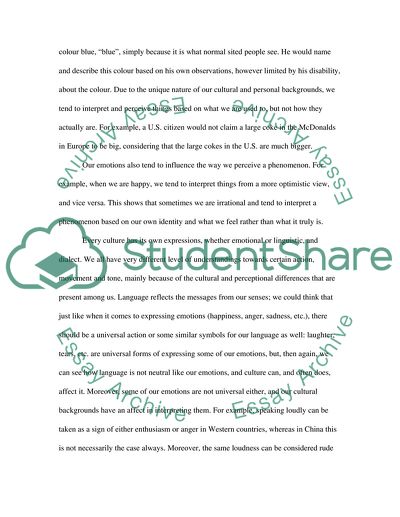Cite this document
(“Different Cultural Backgrounds: Understandings toward Our Surroundings Essay - 1”, n.d.)
Different Cultural Backgrounds: Understandings toward Our Surroundings Essay - 1. Retrieved from https://studentshare.org/english/1562149-we-see-and-understand-things-not-as-they-are-but-as-we-are-discuss-this-claim-in-relation-to-at-least-two-ways-of-knowing
Different Cultural Backgrounds: Understandings toward Our Surroundings Essay - 1. Retrieved from https://studentshare.org/english/1562149-we-see-and-understand-things-not-as-they-are-but-as-we-are-discuss-this-claim-in-relation-to-at-least-two-ways-of-knowing
(Different Cultural Backgrounds: Understandings Toward Our Surroundings Essay - 1)
Different Cultural Backgrounds: Understandings Toward Our Surroundings Essay - 1. https://studentshare.org/english/1562149-we-see-and-understand-things-not-as-they-are-but-as-we-are-discuss-this-claim-in-relation-to-at-least-two-ways-of-knowing.
Different Cultural Backgrounds: Understandings Toward Our Surroundings Essay - 1. https://studentshare.org/english/1562149-we-see-and-understand-things-not-as-they-are-but-as-we-are-discuss-this-claim-in-relation-to-at-least-two-ways-of-knowing.
“Different Cultural Backgrounds: Understandings Toward Our Surroundings Essay - 1”, n.d. https://studentshare.org/english/1562149-we-see-and-understand-things-not-as-they-are-but-as-we-are-discuss-this-claim-in-relation-to-at-least-two-ways-of-knowing.


